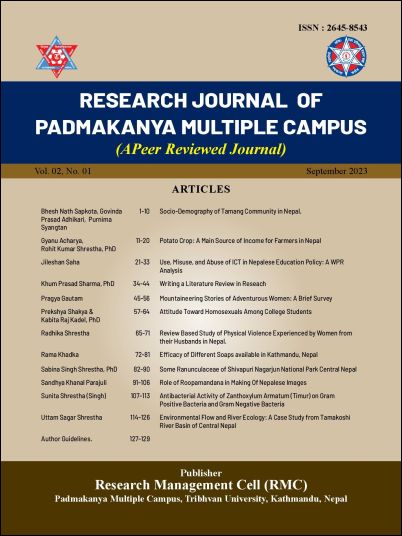Environmental Flow and River Ecology: A Case Study from Tamakoshi River Basin of Central Nepal
DOI:
https://doi.org/10.3126/rjpkmc.v2i1.63000Keywords:
Ecological flow, Hydropower policy, Local community, River ecology, Tamakoshi River basinAbstract
Does environmental flow (E-flow) work for maintaining the hydro-ecological regime in Tamakoshi River Basins of Nepal? The flow regime of 15 spatial and temporal locations of main and 17 tributaries was examined through the area velocity methods and Pigmy flow meter in the year 2014 and 2015. Moreover, observations and socio-economic survey of 412 household with buffer zone of 1000 meter in the either side was carried out to understand the flow characteristics along the settlements of 1000 meter (each side) of the basin. However, the Basin is in pressure due to fifteen different types of major and minor hydropower projects. Therefore, desired environmental flows need to be maintained to understand existing geo-hydro- ecological relationship associated with river side settlements. The present policy and practice of allocating 10%—flow is not feasible for the existing ecological balance and local stakeholders. There is an urgent need to develop holistic basin wise approach, and frameworks for environmental flows in the Tamakoshi River Basin. The main objective of this paper is to assess implication of ecological flow maintaining river ecology and perception of basin people. The present paper is based on the field survey of the basin 2014 and 2015, Key Informant Interviews, Stakeholder consultation.




